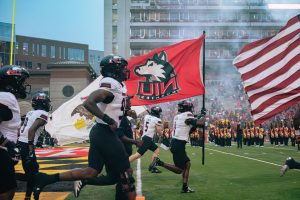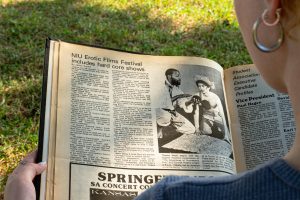What’s legal and what’s not?
September 12, 2003
The accessory-laden cars people drive around campus might look cool, but they aren’t necessarily legal.
Ross Spencer, an import sales technician for Evans Racing in Rockford, said any import or tuner shop can modify a vehicle.
Spencer said the most common cars to be modified are Honda, Mitsubishi and Toyota.
Josh Thew, who drives a 1993 Mazda RX7 and has been working on cars since he was 13, said a lot of money can go into car modifications.
“There’s about $26,000 [worth of modifications] done to my car,” Thew said. “There’s nothing stock in my car.”
Thew said he has done most of the modifying himself.
The most common parts modified on vehicles are the engine, lights, windows, exhaust, stereo and the vehicle’s height above ground, Spencer said.
There are legal limits to what can be modified on a vehicle:
– Any blue lights in or outside a car are illegal. Only white and amber lights are legal.
– Windows tinted in the front are illegal – tinted windows are only allowed in the back windows.
– An exhaust exceeding 85 decibels at idle is illegal.
– At any volume, if a vehicle’s stereo can be heard 80 feet away or more, it’s illegal.
– A car riding less than 15 to 16 1/2 inches above the ground is illegal.
“By law, if your car’s engine doesn’t come directly from the factory, it is illegal,” Spencer said. “Which means any motor modification done to your car after factory production is illegal.”
The Land Transport Authority (LTA) states on its Web site, www.onemotoring.com, that vehicle modification is OK to do, as long as the vehicle is checked and the parts are legal.
The site stated that because modifications can improve a vehicle’s performance or create a unique appearance, there’s nothing wrong with consumers modifying their vehicles.






